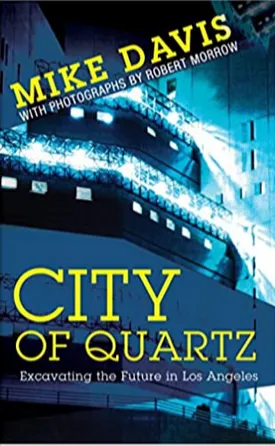City of Quartz: Excavating the Future in Los Angeles by Mike Davis
In Mike Davis' seminal work, City of Quartz: Excavating the Future in Los Angeles, Davis examines the complex city of Los Angeles from both historical and contemporary perspectives. He explains the sprawling urban landscape at the heart of the city, focusing particularly on the relationship between the city's residents and their environments. The book pays special attention to the ways in which the landscape of Los Angeles has been shaped over the decades by political, economic, and social forces.
Through his comprehensive analysis of Los Angeles, Davis brings to light a number of issues that confront the city. He focuses on the city's history of sprawl and uneven development, the displacement of long-time residents, and the growth of the police state. In addition, Davis explores the issues of race, racism, and class struggle that contribute to Los Angeles' uneven spatial structure. Through this framework, Davis argues that Los Angeles is an example of the 'commodified American dream', a prototypical example of a neoliberal urban environment.
Davis is critical of the city's economic, political and spatial inequality, arguing that the affluent classes, represented in what he calls a 'fortress city' mentality, are able to isolate themselves from the realities of urban life. He also argues that the city's elite are able to use the political system to their advantage, manipulating zoning laws and urban growth policy to benefit themselves while exacerbating the structural inequalities of the region. By looking closely at the city's geography, Davis paints a stark image of a city divided by race, class and space.
Throughout the book, Davis offers an alternative vision for Los Angeles along with concrete proposals for reshaping the cityscape. He argues for the necessity of addressing sprawl, increased public transportation, and the development of affordable housing for all city residents. Davis also recommends increasing job opportunities for those living in economically disadvantaged areas, and encouraging community investment. In addition, Davis makes the case for a more equitable taxation system and more effective enforcement of existing laws against corporate crime.
This comprehensive and powerful case makes City of Quartz an essential read for anyone looking to understand Los Angeles and its many complexities. With its thoughtful analysis and passionate arguments, Davis has created an invaluable guide for those looking to shape the city for the better. Whether you agree with his vision or not, City of Quartz offers essential insight into the current and future state of the city. Throughout its pages, Davis argues with soul and conviction, writing in a style that will keep readers engaged and inspired.

